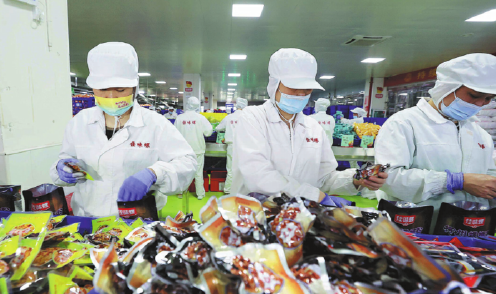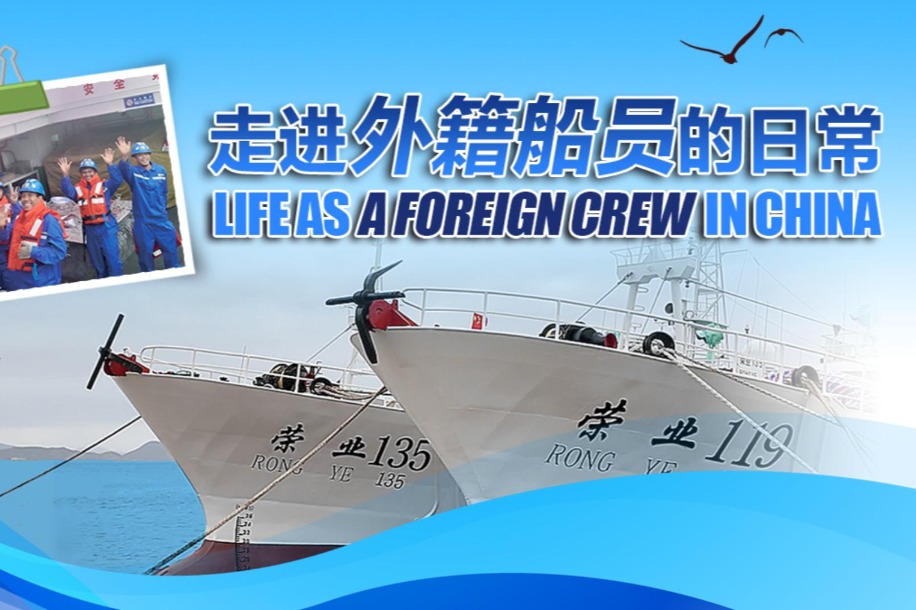Hunger for snacks a key driver in economy
Food and beverage industry in China worth more than 4 trillion yuan a year

Snacks like Liuzhou river snail rice noodles, Lanzhou noodles and Shaxian snacks are becoming important for boosting economic growth, promoting cultural tourism and creating job opportunities, according to a People's Daily report.
A recently held carnival themed around China's famed snacks in Shaxian district of Sanming, Fujian province, drew a huge number of visitors.
"My taste buds were satisfied and I also got to learn a lot about food culture. It was definitely a worthwhile trip," said Li Wei, a tourist who traveled from Fuzhou, Fujian, to attend.
With more than 6 million businesses and 20 million workers, China's food and beverage industry generates nearly 4.4 trillion yuan ($618 billion) annually, representing 10 percent of the total retail sales of consumer goods.
The year-on-year 19.8 percent revenue growth of the industry in the first four months outpaced the total retail sales of consumer goods by 11.3 percentage points. Snacks are the largest category within the industry.
"The snack industry directly affects people's income and daily lives, and is a major contributor to boosting consumption, improving people's livelihoods and stabilizing employment," Wang Dongtang, who heads the department of trade in services and commercial services at the Ministry of Commerce, said at a recent symposium in Shaxian.
"The national F&B market is experiencing a rapid recovery. Businesses are gaining greater confidence and new forms of consumption and business are emerging," Wang said. "In this context, vigorously developing the snack industry will play a vital role in promoting the high-quality development of the F&B industry and meeting people's aspirations for a better life."
With increasing demand for upgraded consumption, the snack industry is continuously innovating.
Liuzhou in the Guangxi Zhuang autonomous region has built a designated e-commerce center for its renowned river snail rice noodles. It serves as a platform for various forms of business, including livestream selling and community group buying. A tourist route and a scenic area centered around the snack have also been launched.
The incorporation of local snacks into cultural and tourism activities has become a trend in many cities. In Jiangxi province, for instance, locations such as the historical and cultural area at Wanshou Palace in Nanchang and the Jingde Memories Food and Culture Street have local snacks as a major feature. Both proved popular tourist destinations during the May Day holiday.
"To promote high-quality growth in the snack industry, integrated development is the way forward," said Song Xiaoxi, vice-president of the China Hospitality Association.
She suggested that the snack industry could become a more significant contributor to economic and social development by integrating with sectors such as tourism and cultural and creative industries. She also suggested a move into partially prepared dishes. This could drive development in sectors such as agriculture, raw material production and processing, and kitchenware design.
For example, in Shaxian district, a thriving snack industry has been cultivated. It features an industrial chain that spans planting and processing to the sale of the finished products. To support this industry, 4,000 hectares of land is dedicated to the cultivation of snack ingredients, involving the work of some 20,000 farmers.
Wang from the Ministry of Commerce pointed out the snack industry still faces issues such as uneven development and insufficient standardization. Additionally, F&B businesses still exhibit low levels of risk resilience and innovation capacity.
As the majority of entities in the snack industry are self-employed businesses, it is crucial to provide business owners with incentives, create a favorable business environment, cultivate brands and standardize industry practices, Wang noted.
Wu Ying, vice-president of the China Cuisine Association, has vowed to continue supporting the standardization, brand development and digitalization of the snack industry, with the goal of introducing more customers to food culture and creating a supportive environment for the industry's growth.

Today's Top News
- Effective use of investment emphasized
- China's shuttle diplomacy strives to reach ceasefire
- Nanjing Museum's handling of donated art, relics being probed
- Key role of central SOEs emphasized
- New travel program hailed as 'milestone'
- Animated films top draw at box office






























